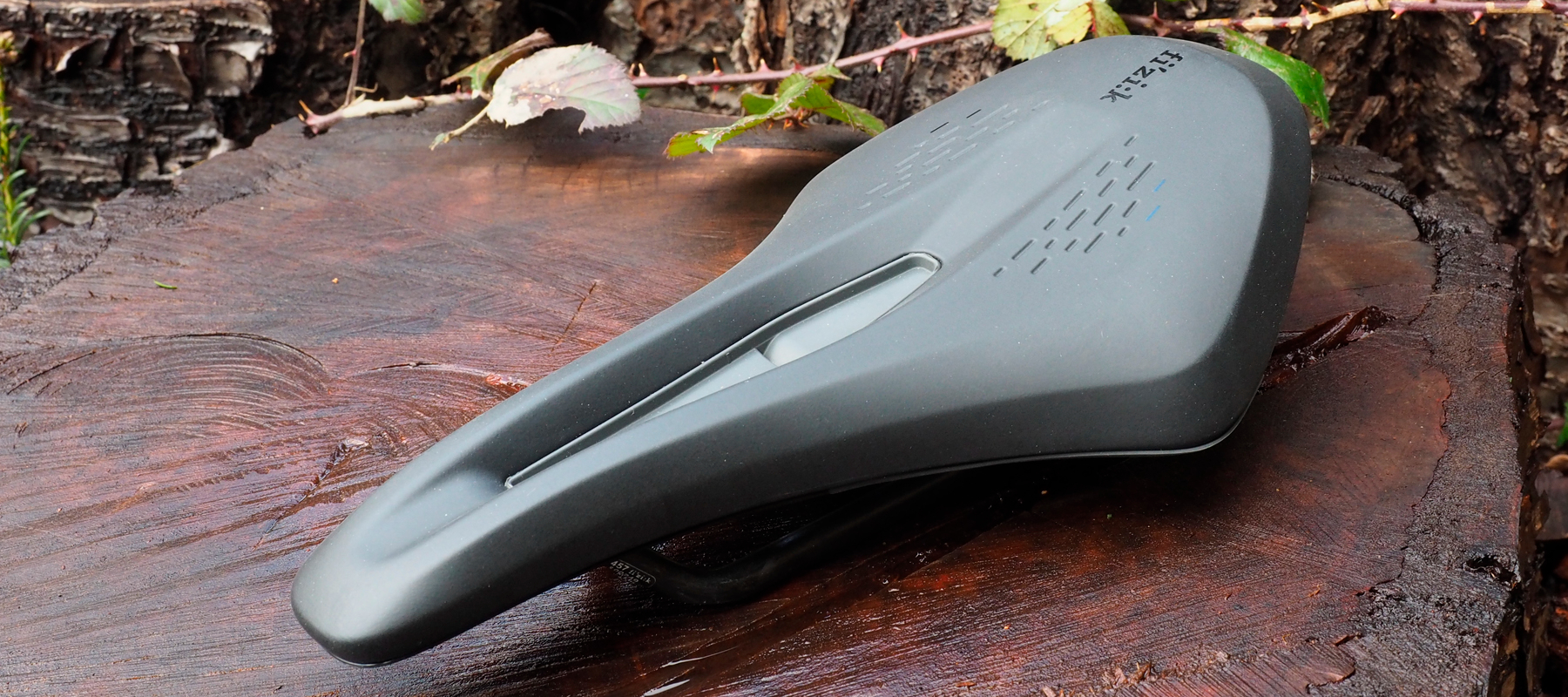Bike Perfect Verdict
It’s hard to imagine many off-roaders being disappointed with the Terra Argo saddles – it's supremely comfortable and thoughtfully designed. But the entry-level versions are almost too good to give this top-end model a look-in.
Pros
- +
Soft yet resilient cushioning
- +
Great vibration absorption
- +
Secure but flexible riding position
Cons
- -
Price for the weight
Why trust BikePerfect
The off-road Terra Argo is the most recent member of Fizik’s shorter-nosed Argo family of saddles – and the carbon-railed X1 has just joined the line-up as its lightest and priciest variant.
Like its cheaper siblings it’s got a lot going for it, with features that blend compliance and stability, and some considered off-road elements. Like any saddle, it’s about more than just features - the shape has to fit your hips and your riding style, and the flatter style of this one leans more towards a locked-in position, plus an emphasis on pressure relief. Let’s see how it rides compared to the best gravel saddles around.
For information on Bike Perfect's testing procedures and how our scoring system works, see our how we test page.
Design and aesthetics
Despite the ‘short nosed’ description the Terra Argo actually looks full length – it’s the longest in our current mixed batch at 270mm.
But a few things give it the pressure-relieving benefits of a short-nosed design. One is the wide center channel, which goes pretty much all the way to the tip. The other is its extra-long saddle rail, which means that it can be moved further back on the rails than many. And its fairly long rear section means it’s actually neither super-long nor super-short from tip to the widest point.
The overall shape is wedge-like, exaggerated by the wide flare around the sides and edges, and the whole saddle is thoughtfully contoured. Side to side it’s built on three angles. It’s very flat in the center where your sit bones go, at just 11 degrees. The middle third gains more of a downward tilt, for a bit more maneuverability, and then there's that final downward flare at the edges - useful for helping you move off the back of the saddle when you want to, at the back at least.
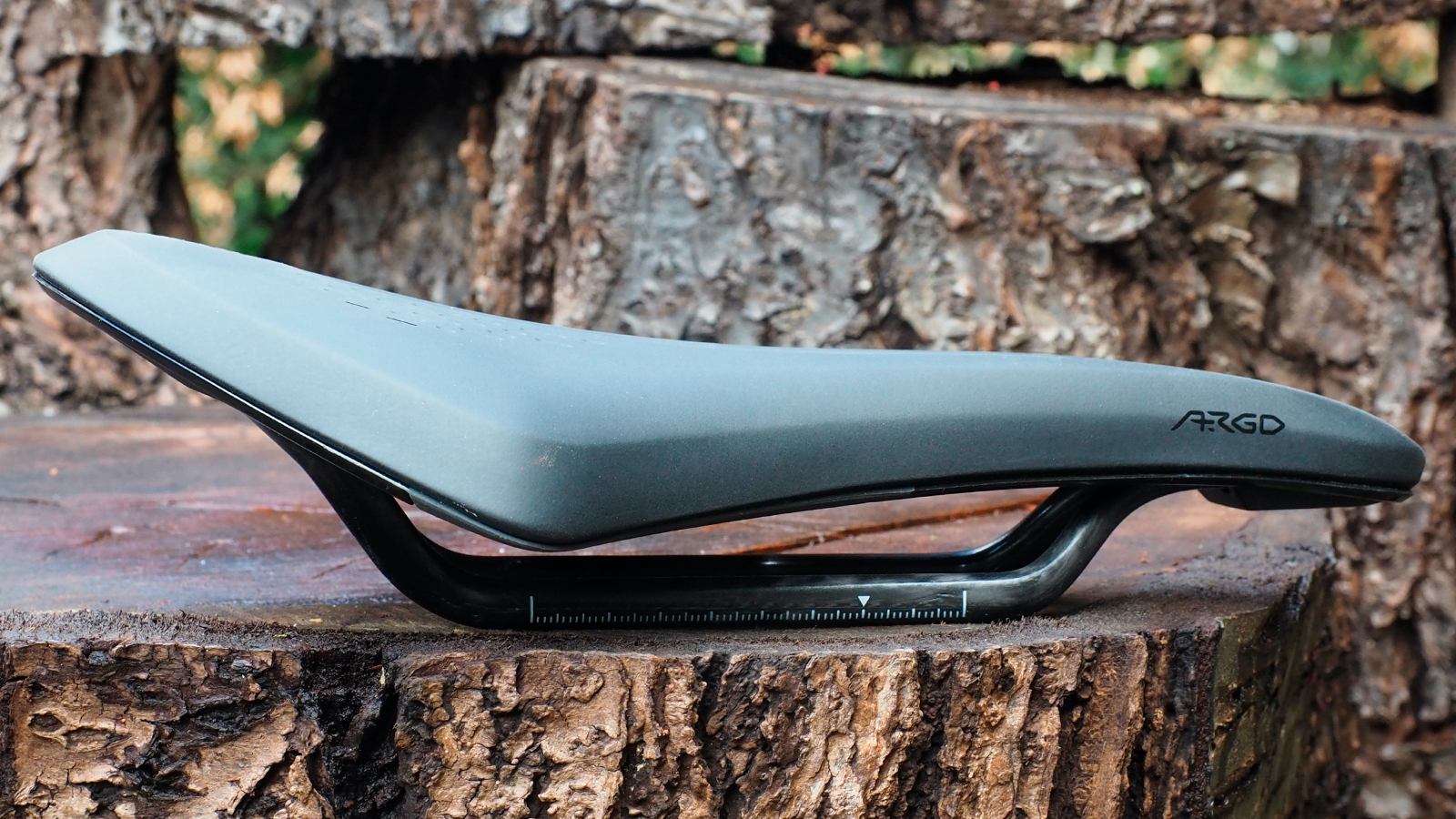
Front to back the Terra Argo has a wave contour – fairly flat at the front, dipping slightly in the midsection, and then a long rise at the back at a reasonably steep 13 degrees.
The overall aesthetic is understated and elegant. The cover material hits a nice balance between smoothness and grip, including a series of indented lines for grip where the sit bones go. Thoughtful small details include the drainage slit in the base of the center cutaway section. You get protection from spray coming up, without the risk of water pooling once it’s there.
Specifications
On the underside, ovalized carbon rails distinguish the X1 from the metal-railed X3 and give it a little more rigidity and its 30g weight saving. As well as being extra long, they’re actually one continuous rail that extends all the way around the underside of the very back of the saddle to give more stability (Fizik calls this a Mobius Rail.).
As with most carbon rails, they’re ovalized with extra height for increased strength. That’s fine if you have a normal vertically clamping seat clamp, but you’ll need an adaptor if yours clamps from the side.
The shell (or base) is made of carbon-reinforced nylon, as is normal for mid- to high-end saddles, and is distinctively flexible at the outer flared edges, as on Fizik’s MTB saddles. Part of me isn’t sure I want any of my watts going into flexing a saddle shell, but it’s one of a package of features aiming at reducing vibration and fatigue on long days on rough ground.
The cushioning is Fizik’s softer ‘type 2’ foam, which is also slightly thicker towards the rear to support a more upright riding style.
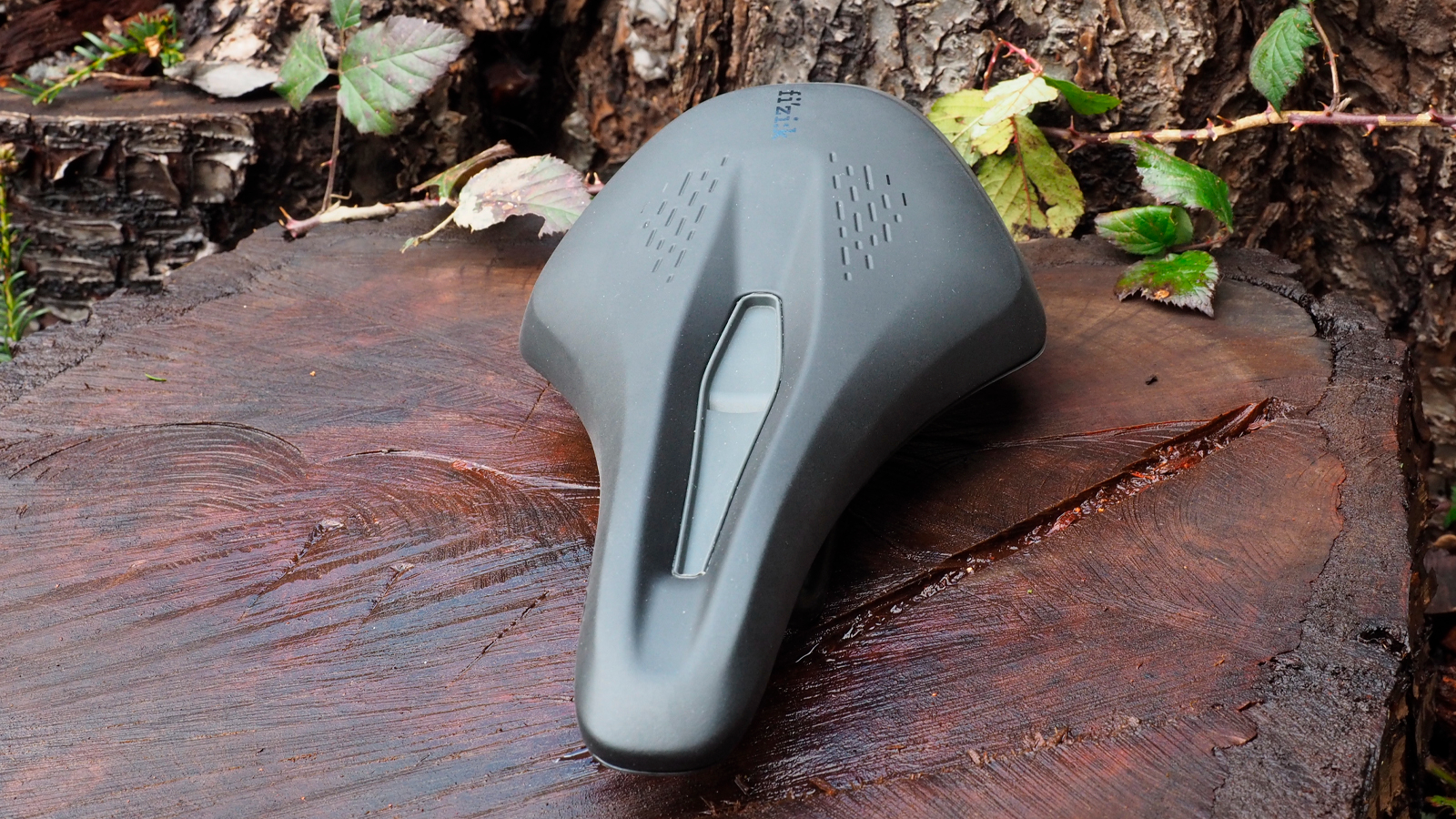
Performance
The Terra Argo X1 was a very easy saddle to keep coming back to, for gravel and for mountain biking.
Its cushioning and compliance did a great job of absorbing vibration while providing support. It really did feel soft but not in a way that ever bottomed out (no pun intended).
And fortunately for me, its super-wide and super-flat appearance was a bit of an optical illusion, which gave it more flexibility in terms of seating position. Side to side, while its very center is very flat, the progressive slope beyond that gives you flexibility and allows you to feel part of the saddle rather than just on it.
And end to end, the steepish rise at the back gave a locked-in feel and something to leverage against on climbs, but still allowed plenty of fore-aft position variation because it was such a long slope.
While the Terra Argo only comes in relatively wide options - 150mm and 160mm - I found the 150mm version just fine even though I’d normally choose 140mm.
In most of my gravel riding, I wasn’t needing the pressure-relieving benefit of a shorter nose and a long cutout for getting low and aero for long periods, but either way, discomfort wasn’t a problem, even on long days.
Hand on heart I can’t say I noticed the extra rigidity that the carbon rails added (I’ve never had a problem with lack of rigidity on steel or titanium rails) and I’m not sure I noticed the 30g weight saving over the X3 either, though I guess it all adds up. It’s possible that the specific carbon fiber design contributes to the way the Terra Argo absorbs vibration so well, but this isn’t something Fizik mentions as an intention, and good damping seems to be a quality of all the Terra Argo variants models regardless.
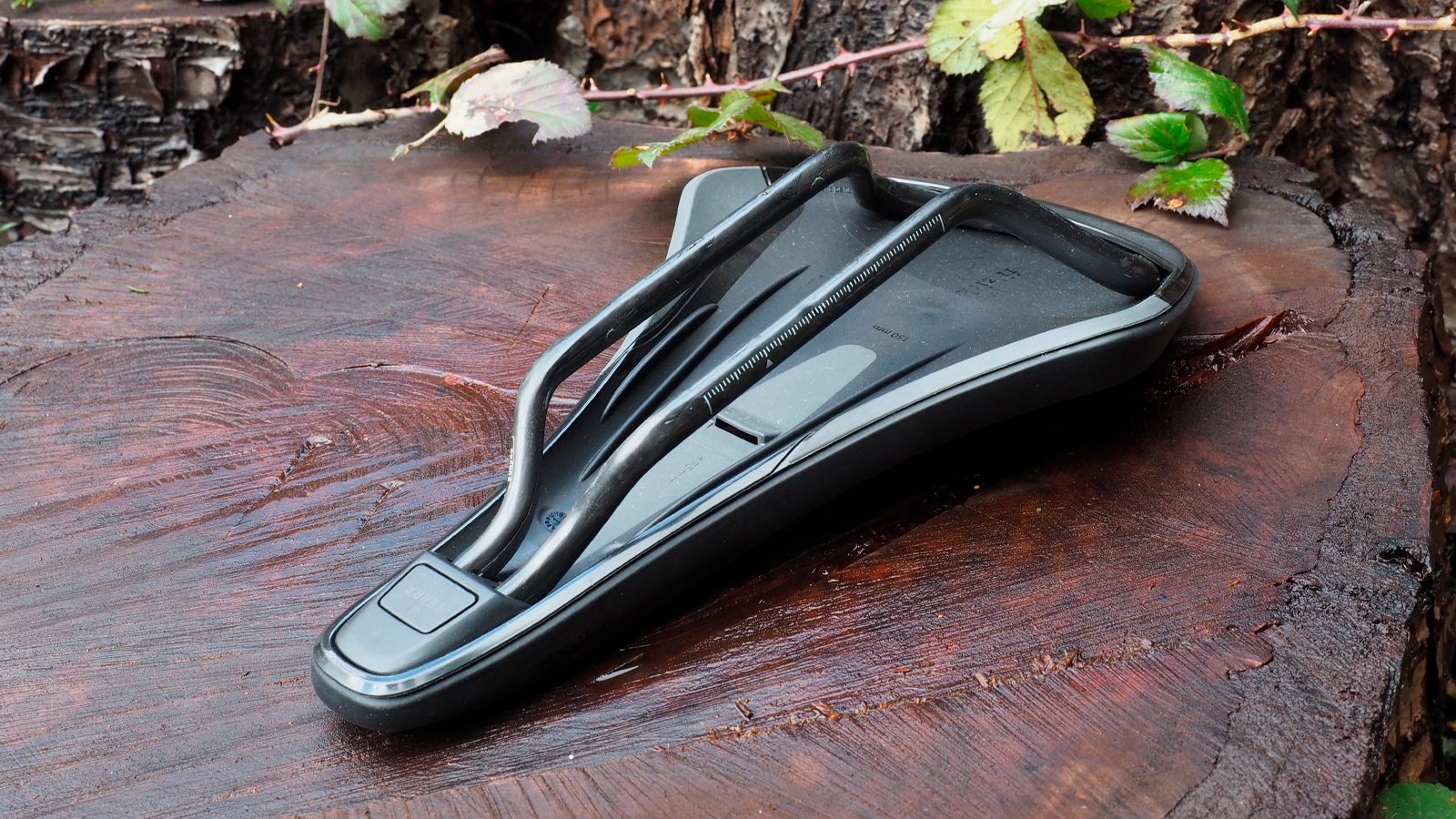
Verdict
Performance-wise the Terra Argo X1 is easily a 9/10, but the price brings it down to a 7/10 overall. $200/£180 is quite a lot for a 214g saddle, even though we know how much time and expense goes into carbon fabrication.
We also know that you can get more expensive saddles that are heavier and that a good saddle certainly isn’t all about weight. But unfortunately for the X1, its impressive siblings are almost identical apart from the rails, so a $60/£50 upgrade is quite an ask for a 30g weight saving and a bit of rail stiffness over the X3 ($140/£130, 245g) and even more so over the X5 ($100/£90, 257g).
And if you’re chasing lightweight, there are lighter options at the same price or less, including the Selle San Marco Allroad Carbon at a little over 150g.
Tech Specs: Fizik Terra Argo X1
- Price: $199.99 / £179.99
- Colors: Black
- Sizes: 150mm (tested) or 160mm width x 270mm length
- Lateral profile: Semi-flat
- Weight: 214g (150mm)
- Key materials: Carbon-reinforced shell, carbon rails
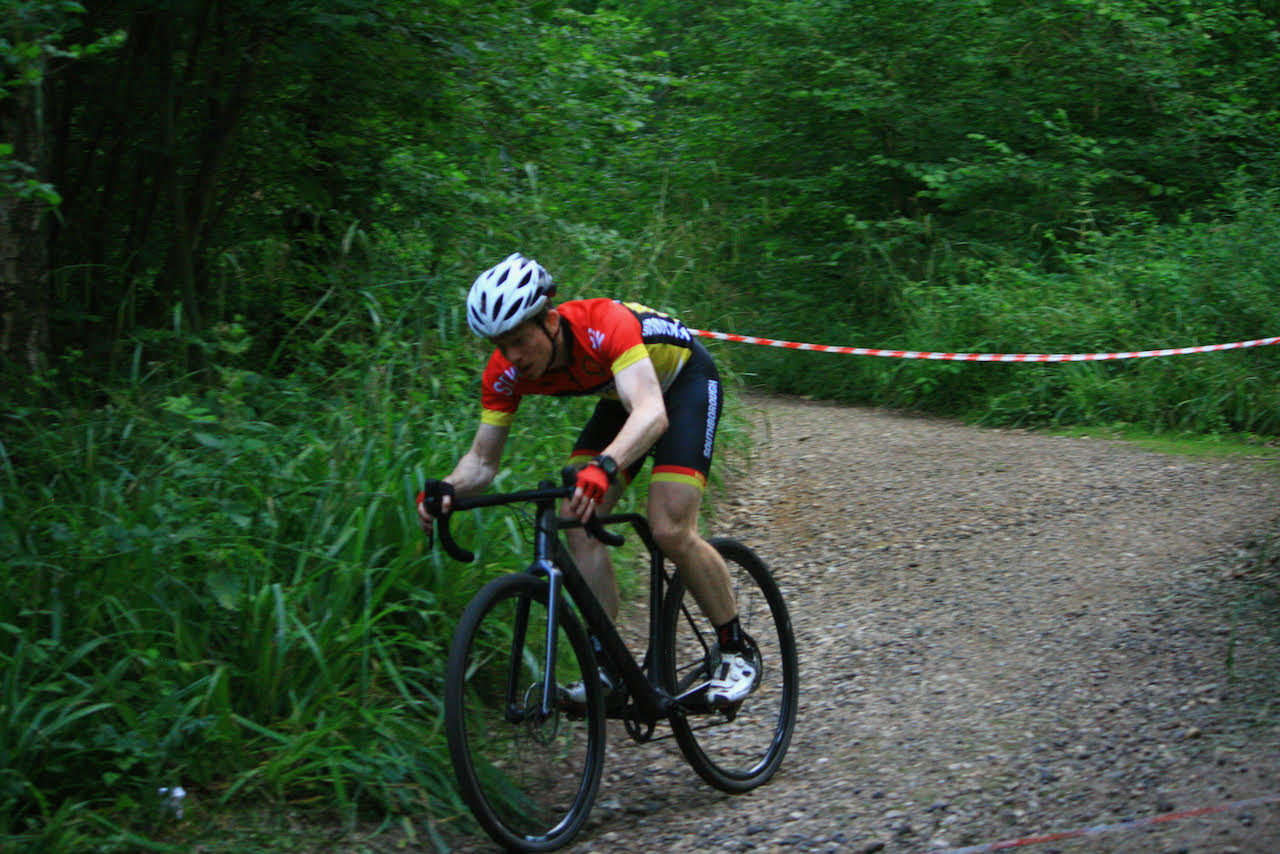
Sean has old school cycle touring in his blood, with a coast to coast USA ride and a number of month-long European tours in his very relaxed palmares. Also an enthusiastic midpack club cyclocross and XC racer, he loves his role as a junior cycle coach on the Kent/Sussex borders, and likes to squeeze in a one-day unsupported 100-miler on the South Downs Way at least once a year. Triathlon and adventure racing fit into his meandering cycling past, as does clattering around the Peak District on a rigid Stumpjumper back in the day.
Height: 173cm
Weight: 65kg
Rides: Specialized Chisel Comp; Canyon Inflite CF SLX; Canyon Aeroad; Roberts custom road bike
